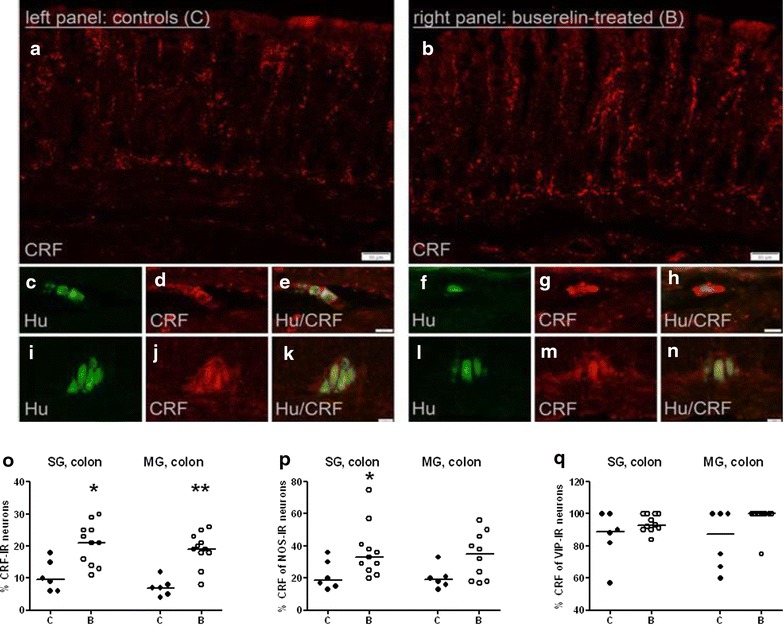Fig. 3.

Cryo sections of colon from rats treated with four sessions of saline (controls, C) in the left panel or buserelin (B) in the right panel. Double-immunostaining with human neuronal protein (Hu; green) and corticotropin-releasing factor (CRF; red). Micrographs a and b show intense CRF-immunostaining of fibers in the colon mucosa and submucosa. Micrographs c–h of submucosal ganglia (SG) are visualizing HuC/D-immunoreactive (IR) neurons (c, f) also IR to CRF (d, g). Micrographs c and d are merged in e, and micrographs f and g are merged in h. Micrographs i–n of myenteric ganglia (MG) are visualizing HuC/D-IR neurons (i, l) also IR to CRF (j, m). Micrographs i and j are merged in k, and micrographs l and m are merged in n. In micrograph o, the relative numbers of CRF-IR neurons in SG and MG of colon are presented. The percentage of CRF-IR neurons of the neurons IR to nitric oxide synthase (NOS, p) and vasoactive intestinal peptide (VIP, q) is presented. Four sessions of buserelin treatment increased the expression of submucosal NOS-IR neurons also showing CRF immunoreactivity (p < 0.05) (p), and there was a trend to increased numbers of myenteric NOS- and VIP-IR neurons also IR to CRF, compared with controls (both, p = 0.070) (p, q). C = 5 rats and B = 11 rats. Results are presented as individual values and medians and were analyzed by the Mann–Whitney U-test. Statistical significance is indicated by *p < 0.05 and **p < 0.01
